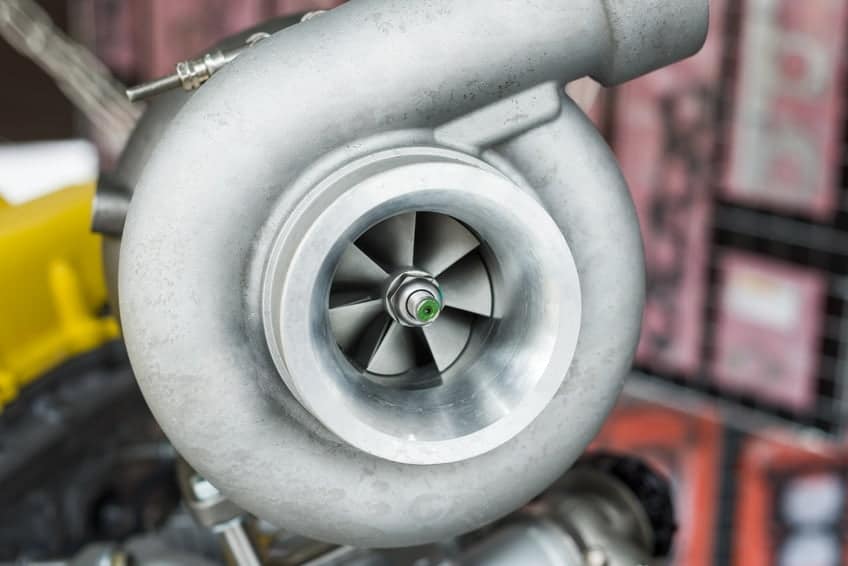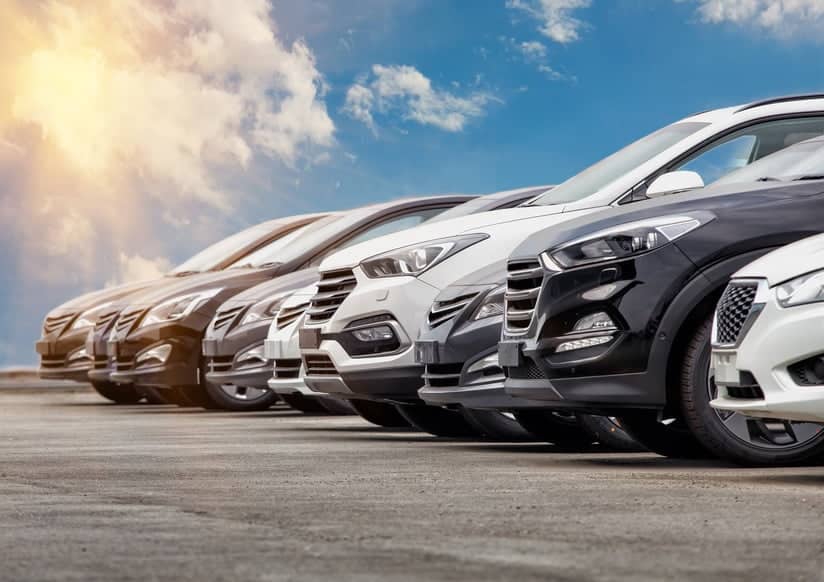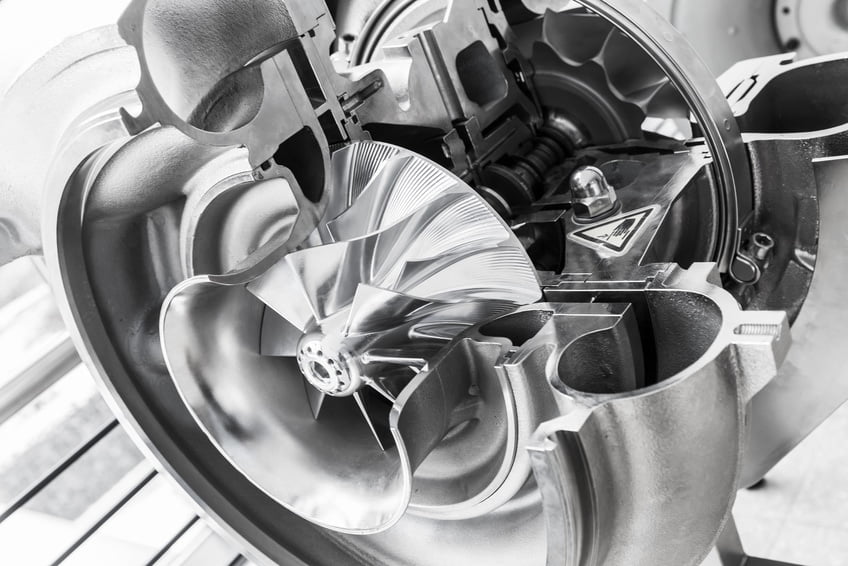We’ve all heard of turbo engines but how much do you know about how they work? In this guide, we look at the ins and outs of turbochargers, from their benefits and downsides to how they differ from normally aspirated engines.
How Do They Work?
Turbos are composed of a shaft with a turbine wheel on one end and a compressor wheel on the other. These are covered by a snail-shaped housing featuring an inlet port, which the wasted exhaust gases enter at a high pressure. As the air passes through the turbine, the turbine spins and the compressor turns with it, drawing in vast quantities of air which are compressed and passed out of the outlet port.

A pipe feeds this compressed air back into the cylinders via an intercooler, which cools the air before it reaches the cylinders. As turbos run at such high speeds (up to 250,000 RPM), they typically have an oil cooling system to make sure they don’t run too hot. Most systems also contain a valve known as a ‘wastegate’, which is used to divert excess gas away from the turbocharger when the engine produces too much boost, preventing damage to the turbine by limiting its rotational speed.
Turbocharged engines differ from standard engines in that they make use of wasted exhaust gases to pull more air into the intake valve. While naturally-aspirated engines rely on natural air pressure to draw air into the engine, turbos speed up this process, producing power more economically.
What Are the Benefits of Turbos?
Turbochargers offer a range of benefits, hence why they’re now so popular on modern cars. Here, we list the main plus points of a turbocharged engine.
Power
Turbos produce more power in the same sized engine. That’s because every stroke of the piston generates more power than in naturally-aspirated engines. This means that more cars are now fitted with smaller, turbocharged engines, replacing larger and less economical units. A good example of this is Ford’s decision to replace its standard 1.6L petrol engine with a 1L turbocharged unit, which it calls EcoBoost.
Economy
Because turbochargers can produce the same power output as larger, naturally-aspirated engines, this paves the way for the use of smaller, lighter and more economical engines. Now, all modern diesel cars are fitted with a turbocharger, improving fuel economy and reducing emissions.
Torque and Performance
Even on the smallest engines, turbochargers produce more torque, particularly lower down the rev range. This means cars benefit from strong, nippy performance, which is great around town and helps the engine to feel more refined at higher speeds on motorways and A roads. At low speeds, small turbocharged engines can outpace cars fitted with larger, naturally-aspirated engines, because of the torque they produce.
Quiet Engines
As the air in a turbocharged engine is filtered through more pipes and components, the intake and exhaust noise is reduced and refined, making for a quieter and smoother engine noise – perhaps one of the most unexpected benefits of a turbocharged engine.

And What are the Downsides?
While turbos are becoming ever more popular, they do have some pitfalls, which we’ve listed below.
Expensive Repair Costs
Turbochargers add complexity to an engine, with a whole host of other components beneath the bonnet that can fail or develop faults. These problems can be expensive to put right, and can have an impact on other components if they fail.
Turbo Lag
Turbo lag is a brief delay in response after pressing the throttle, which can occur when the engine isn’t producing enough exhaust gas to spin the turbo’s intake turbine quick enough. This only really happens when the car is being driven aggressively, or from a closed throttle position. In high-performance cars, manufacturers prevent turbo lag by adding two turbochargers of differing geometry, rather than one big one with only a single turbine.

Efficiency vs Driving Style
Achieving the claimed efficiency figures of a turbocharged engine requires careful throttle control, whereby the accelerator isn’t pressed too hard. When a turbocharger is ‘on boost’, the cylinders are burning fuel more quickly, leading to poor efficiency. Drivers going from a naturally-aspirated car to a turbocharged model may need to adjust their driving style to maintain good efficiency, particularly when first setting off.
Where Do Turbochargers Come From?
The first turbocharger was produced in the late 19th century by German engineer, Gottlieb Daimler, but they didn’t come to prominence until after WWI, when aircraft manufacturers began adding them to aeroplanes to provide power to engines operating at higher altitudes, where the air is thinner.
Turbochargers weren’t added to car engines until 1961, when US manufacturer Oldsmobile, used a simple turbo to boost the power of a 3.5L V8 engine. In 1984, Saab developed a new, more efficient turbo system, and this design, with a few tweaks and modifications, remains the most popular turbocharger configuration today.
At Redex, our fuel system additives improve performance in turbocharged and naturally-aspirated diesel and petrol engines. With a shot of Redex in every tank of fuel, you can enjoy improved performance and engine health. For more information, visit the Redex homepage.